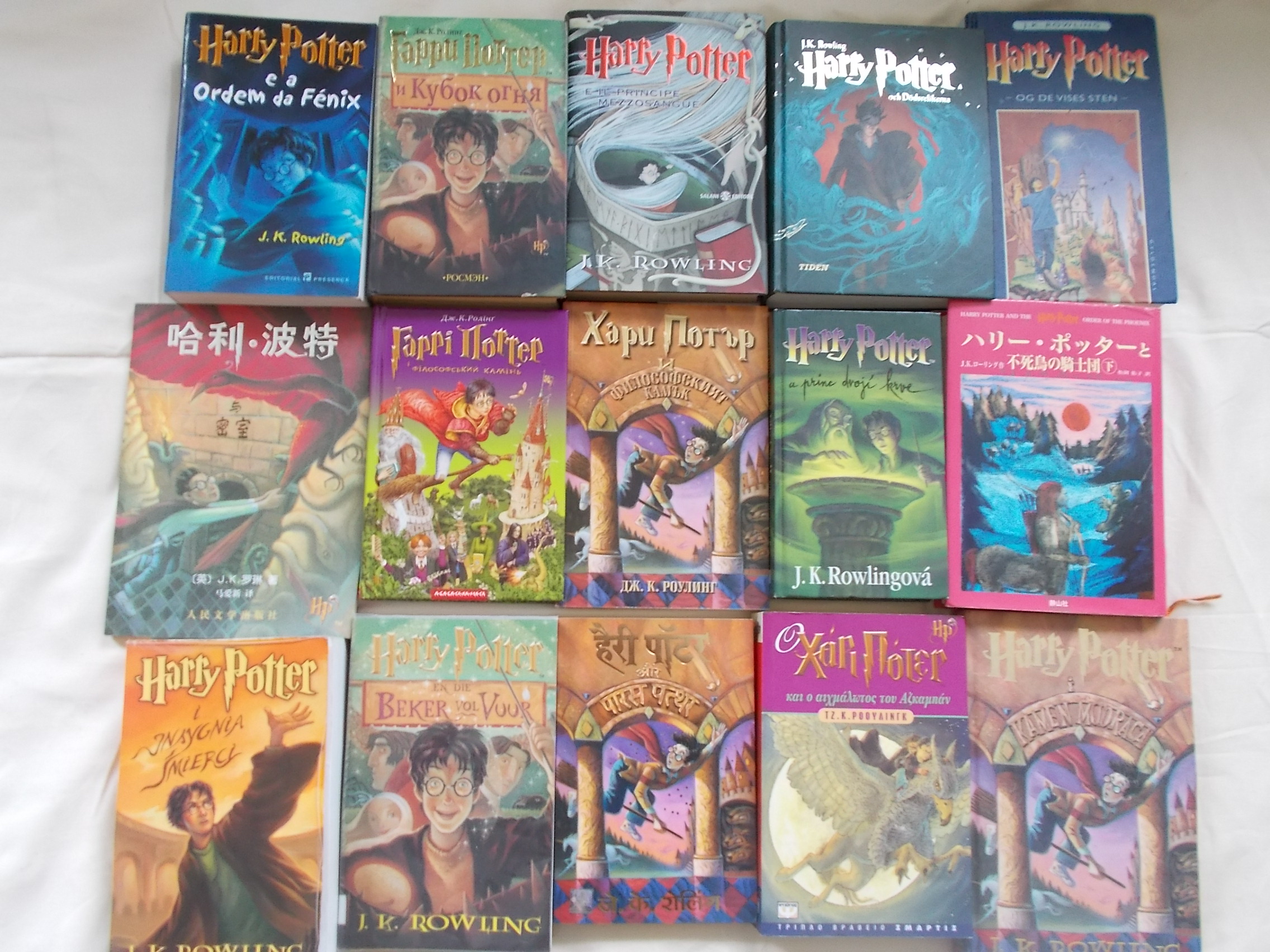
Today’s blog post is about how you can magically improve and boost your intermediate reading comprehension through parallel reading of literature, e.g. the ‘Harry Potter’ books 🙂 .
All you need is a book in your target language and the same book in your native language (or in another language you are very proficient and advanced in) as well as two bookmarks, so you can read them in parallel. This will make a dictionary redundant.
I personally collect the ‘Harry Potter’- books in all languages, but not as a “collector’s item” but actually to read them in these languages. The ‘Harry Potter’-books are great to improve your reading comprehension especially in ‘minor’ languages, since they are often available even in smaller languages where it is otherwise virtually impossible to get hold of literature in the language unless you travel to the country and bring them home with you. But you can use virtually any book in your target language for which you can get a copy also in your native language. However, popular books like bestsellers, the ‘Harry Potter’-series or ‘Le Petit Prince‘ (The Little Prince) by Antoine de Saint-Exupéry, that are collected even by people who cannot speak the languages, are best since they are widely available in many languages (even though they may often be quite expensive!).
So how does this method, parallel reading, work? Basically, you have both books open at the same page and read them alongside each other. However, in order to be efficient to improve your existing intermediate reading skills, you ought to read the text in your target language first, and only check the book in your native language when you really don’t understand something. Done persistently and regularly, this will soon boost your reading skills and you don’t need a dictionary for it.
Another way in which parallel reading can be highly instructive is in comparative reading of both texts. For this, you read each sentence in sequence, first in your target language, then in your native language, all the while comparing how each expression is translated and rendered in your target language. This will not only teach you useful expressions, but it will also teach you something about the translating process. It will also make you familiar with the way sentences are structured in your target language, which can be highly valuable.
Where can you find popular books like the Harry Potter-series or Le Petit Prince in many languages? If you have any second-hand or antiquarian bookstores near where you live, it is always worth a visit going there first to see if they might not have the title you are looking for, as they might be considerably cheaper if bought used, apart from being better for the environment, especially since you need the book also in your native language. If you don’t have any such bookstore near where you live or they do not have your title, try to search on Amazon: type in the title plus ‘in [insert target language of your choice]’, e.g. ‘Harry Potter in Spanish’ or ‘Harry Potter Spanish version/edition’. This ought to bring up some results for many, though unfortunately not for all, languages. 🙂
Do you also collect a certain series of books or a book from a certain author which you like to read in a foreign language? Tell us about it in the comments! 🙂

I do this too! It started when we were in Italy and my boyfriend stole the only book I had brought with me, reasoning that I could just buy one in Italian (unlike him as he doesn’t speak the language). I bought the Philosopher’s Stone and devoured it. Since then I’ve read it in Japanese and Chinese 😀
That’s great you enjoyed it too 🙂 I devour the books as well, and have done so in many languages so far; I read a bit every night!! I hope I’ll be able to read it soon in Japanese and Chinese like you, but so far I haven’t mastered enough characters to be able to tackle literature yet… But I am working on it 😀
The Japanese version has furigana (hiragana above the kanji) which helps a lot. In the Chinese version I found the names difficult at first as they are a phonetic representation of the English words e.g. 霍格沃茨
Huò gé wò cí Hogwarts. I read the Japanese book alongside listening to the audiobook in Japanese which also helped with any unfamiliar characters!
Haven’t read any in a while though so need to reestablish good habits like you!
Haven’t read an
That’s a good idea to listen to an audiobook alongside – i think I’ll have to check this out if I can get one too for the Japanese books. 🙂 I didn’t even know they existed! Actually, I have all the books in Japanese already, but I only understand about half the characters so far… My Nihongo is only intermediate and I understand and speak much better than read and write at the moment…(I learned it with the Teach Yourself books which are unfortunately only in romaji transcription, so now I still have to learn the characters separately even though I can speak and understand!) I guess I’ll have to practise with easier texts first! 😀 (the same goes for the Chinese version, I have 5 of the books in simplified characters and the other 2 books in traditional characters – because I intend to learn Cantonese too, so I want to learn both versions)
Pingback: Multilingual flashcard: Hogwarts – Chrikaru blog